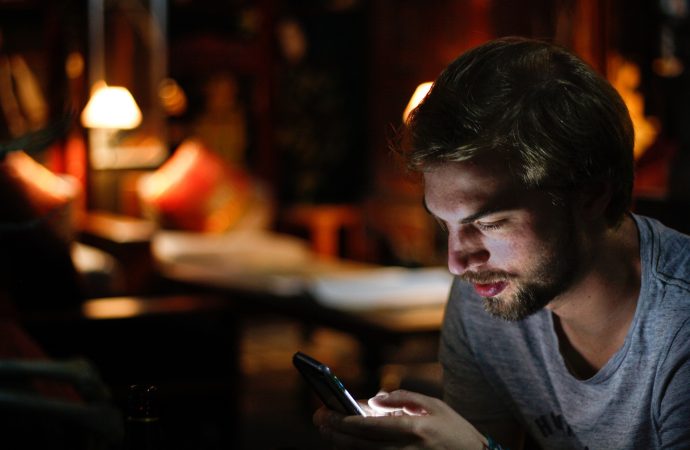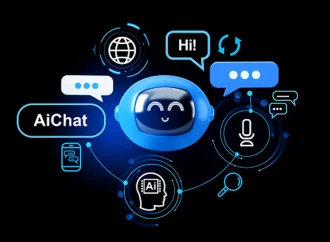Welcome to our blog post on the risks of prolonged smartphone use on your eyes. We all love our smartphones for their convenience and endless entertainment, but have you ever stopped to consider the potential damage they could be causing to your eyes? With nearly everyone glued to their screens for hours on end, it’s
Welcome to our blog post on the risks of prolonged smartphone use on your eyes. We all love our smartphones for their convenience and endless entertainment, but have you ever stopped to consider the potential damage they could be causing to your eyes? With nearly everyone glued to their screens for hours on end, it’s important that we understand the impact this constant exposure can have on our vision. So, are you at risk? Join us as we delve into the dangers of too much screen time and explore ways to protect yourself from long-term eye damage.
How Prolonged Smartphone Use Can Damage Your Eyes
Prolonged use of smartphones can damage your eyes in a number of ways. The blue light emitted by screens can disrupt the sleep cycle and cause eye fatigue. staring at a screen for long periods of time can also lead to dry eyes, as well as headaches and neck pain.
One of the most serious risks associated with prolonged smartphone use is digital eye strain. This condition is caused by the way our eyes focus on small screens. When we look at a screen, our eyes have to work harder to focus on the small text and images. This can lead to a number of symptoms, including:
– Eye fatigue
– Blurry vision
– difficulty focusing
– headaches
– neck pain
If you experience any of these symptoms, it’s important to take a break from your screen and give your eyes a rest. Looking away from your screen every 20 minutes or so and spending time outdoors in natural light will help reduce the risk of digital eye strain.
Symptoms of Eye Damage from Smartphone Use
There are a few key symptoms to be aware of that could indicate your eyes are being damaged by prolonged smartphone use. These include:
-Experiencing increased eye fatigue or strain, even when using the device for short periods of time
-Experiencing headaches, neck pain, or general discomfort after using your smartphone
-Noticing a change in your vision, such as blurred vision or difficulty focusing
-Experiencing dry eyes or increased sensitivity to light after using your smartphone
If you experience any of these symptoms on a regular basis, it’s important to consult with an eye doctor to rule out any potential underlying health conditions. Additionally, it’s crucial to take breaks from screen time and make sure you’re following proper ergonomic principles when using your device.
Who is at Risk for Eye Damage from Smartphone Use?
As we stare at our screens for hours on end, it’s no surprise that some of us are experiencing digital eye strain. But did you know that your risk for other, more serious eye problems increases the more time you spend looking at a screen?
Here are some of the conditions that have been linked to heavy smartphone and device use:
Dry eyes: If you find yourself blinking less often or suffering from itchiness, redness, or general discomfort, it could be a sign of dry eye syndrome. This is caused by reduced tear production and increased evaporation of tears.
Eye fatigue: Also called computer vision syndrome, this condition is characterized by symptoms like headache, blurred vision, neck pain, and redness in the eyes. It occurs when your eyes have to work harder than usual to focus on a screen.
Myopia: Also known as nearsightedness, myopia occurs when light focuses in front of the retina instead of directly on it. This can lead to difficulty seeing distant objects clearly. Research has shown that people who spend more time staring at screens are more likely to develop myopia.
How to Prevent Eye Damage from Smartphone Use
Eye damage from smartphone use is a real and growing concern. The blue light emitted by screens can cause eye strain, fatigue, and even permanent damage to the retina. Here are some tips to help prevent eye damage from smartphone use:
1. Limit your screen time. If you must use your smartphone for extended periods of time, take breaks every 20 minutes or so to rest your eyes.
2. Adjust the brightness of your screen. Too much bright light can be harmful to your eyes. You may need to experiment to find the perfect setting for you, but try to keep the brightness at a comfortable level.
3. Use eye-friendly apps. Some apps have been designed with eye health in mind and can help reduce the risk of eye damage from smartphone use.
4. Blink often! It sounds simple, but blinking lubricates your eyes and prevents them from drying out. This is especially important when you’re looking at a screen for long periods of time.
5. See an eye doctor regularly. Even if you don’t think you have any issues with your vision, it’s important to get checked out by a professional every once in awhile just to be safe.
What to Do If You Think You Have Eye Damage from Smartphone Use
If you think you have eye damage from smartphone use, it is important to see an eye doctor as soon as possible. There are a few things that can be done to help protect your eyes from further damage.
First, try to limit the amount of time you spend looking at your smartphone screen. If you must use your phone for extended periods of time, take breaks every 20 minutes or so to give your eyes a rest.
Second, try to hold your phone at least 14 inches away from your face when using it. This will help reduce the strain on your eyes.
Third, make sure the brightness on your phone is set to a comfortable level. Too much brightness can cause eye fatigue and strain.
Fourth, consider using an anti-glare screen protector on your phone. This will help reduce the amount of blue light that is emitted from the screen and lessen the impact on your eyes.
If you do experience any vision problems after extended smartphone use, be sure to see an eye doctor right away for further evaluation and treatment.
Conclusion
Prolonged smartphone use can be detrimental to your eyesight and it’s important to take steps to protect yourself. Knowing the risks allows you to make informed decisions about how much time you spend using your device. Try setting limits for yourself, such as only checking your phone during certain times of day or taking regular breaks from screens. Additionally, ensure that you are keeping up with regular eye exams so that any issues caused by extended screen use can be caught early on and treated accordingly. Take care of your vision!























Leave a Comment
Your email address will not be published. Required fields are marked with *